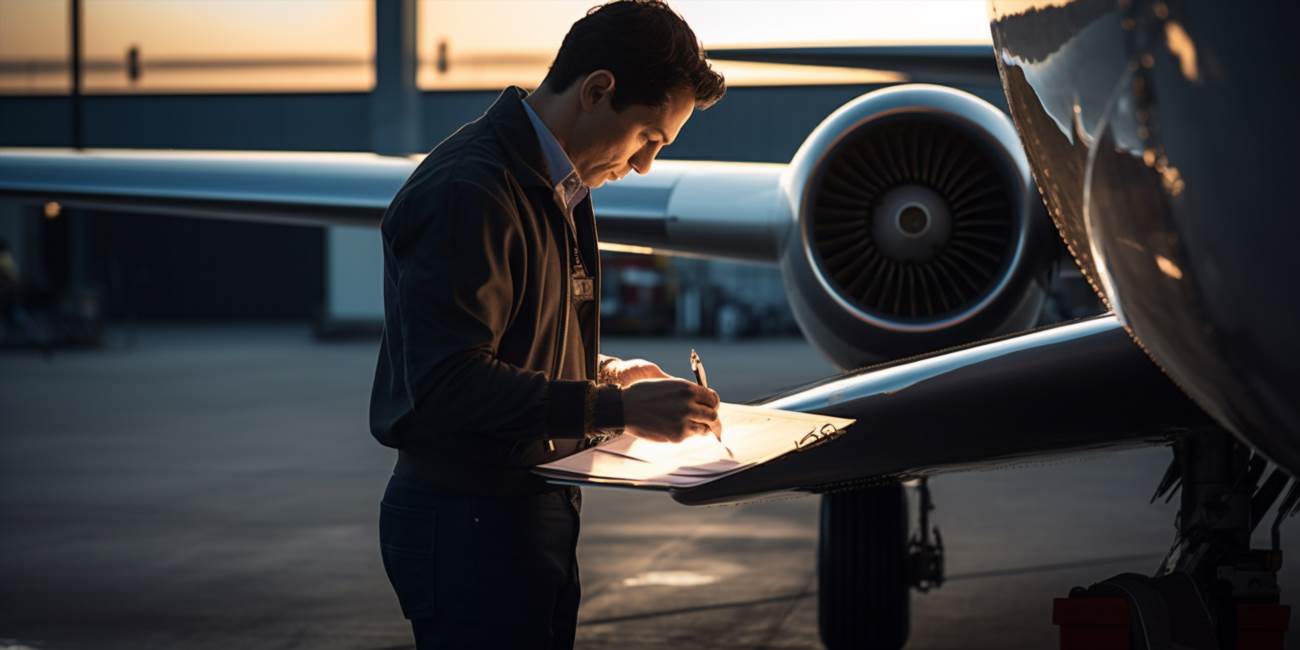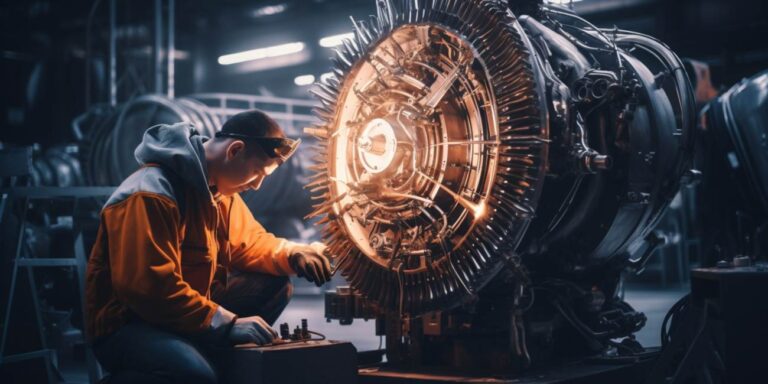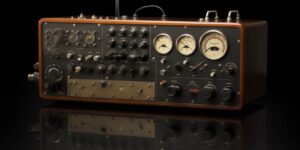First and foremost, aspiring aircraft maintenance technicians must undergo formal training to acquire the necessary knowledge and skills. This training typically involves enrolling in an FAA-approved Aviation Maintenance Technician School. These schools offer comprehensive programs that cover areas such as aircraft systems, avionics, and airframe structures.
During the training, individuals delve into the intricacies of engine maintenance, hydraulics, and electrical systems. Successful completion of the program culminates in obtaining an Airframe and Powerplant (A&P) certificate, a crucial prerequisite for anyone aspiring to work as an aircraft maintenance technician.
The skill set required for this profession is both diverse and specialized. A keen eye for detail, problem-solving abilities, and effective communication are paramount. Attention to detail is particularly crucial as technicians must meticulously inspect and troubleshoot aircraft components to ensure optimal functionality.
With the rise in aviation technology, proficiency in avionics becomes increasingly vital. Aircraft maintenance technicians need to keep pace with advancements in electronics, navigation systems, and communication equipment. This skill set ensures they can address the complexities of modern aircraft.
Upon obtaining the A&P certificate, individuals can explore various career paths within the aviation industry. Some may choose to work for major airlines, ensuring the maintenance and safety of large commercial aircraft. Others may opt for positions in general aviation, where they maintain smaller aircraft used for private and recreational purposes.
Another avenue is to specialize in helicopter maintenance, providing maintenance services for rotary-wing aircraft. This specialization demands a distinct set of skills due to the unique mechanics and components of helicopters.
For those with an entrepreneurial spirit, becoming a freelance aircraft maintenance technician is a viable option. This allows individuals to offer their services to various clients, ranging from private aircraft owners to small aviation businesses.
The demand for skilled aircraft maintenance technicians is expected to remain strong, ensuring a steady stream of opportunities in the field. As technology evolves and the aviation industry continues to grow, those who have undergone proper training and honed their skills will find themselves well-positioned for a fulfilling and enduring career in aircraft maintenance.
Annual salary and job outlook for aircraft mechanics
Working as an aircraft mechanic can be a thrilling and rewarding career, but it’s crucial to consider both the financial aspects and job outlook before diving into the world of aviation maintenance. These professionals play a pivotal role in ensuring the safety and functionality of aircraft, making their expertise indispensable in the aerospace industry.
The annual salary for aircraft mechanics varies based on factors such as experience, location, and the specific sector of the industry. On average, however, aircraft mechanics in the United States can expect to earn a median salary of $64,090 per year, according to the data from the Bureau of Labor Statistics.
Breaking down the figures further, entry-level aircraft mechanics may start with a salary around $40,000 to $50,000, while those with several years of experience or specialized certifications can command salaries well above the median. The aviation industry often rewards expertise, and professionals with a track record of excellence and additional qualifications tend to enjoy higher compensation.
One of the enticing aspects of pursuing a career as an aircraft mechanic is the job outlook. As of the latest data, the employment of aircraft mechanics and service technicians is projected to grow by 6% from 2020 to 2030, which is about as fast as the average for all occupations. This growth is attributed to the increasing demand for air travel, leading to more aircraft in operation and, consequently, a greater need for maintenance and repairs.
Moreover, the ongoing advancements in aircraft technology contribute to the demand for skilled mechanics who can work on modern, sophisticated aircraft. Aircraft mechanics specializing in avionics or unmanned aerial systems (UAS) may find themselves in particularly high demand as these sectors continue to expand.
Table: Median Annual Salary for Aircraft Mechanics
| Experience Level | Median Annual Salary |
|---|---|
| Entry Level | $40,000 – $50,000 |
| Mid-Career | $50,000 – $70,000 |
| Experienced | $70,000 and above |
It’s worth noting that the demand for aircraft mechanics is not limited to commercial airlines. Opportunities exist in various sectors, including general aviation, government, and manufacturing. Mechanics who stay updated on the latest technologies and hold relevant certifications will likely find themselves at the forefront of opportunities in this dynamic field.
Steps to become faa certified to repair and inspect aircraft

Becoming a certified aircraft repair and inspection professional involves a systematic journey marked by training, rigorous examination, and the ultimate attainment of a coveted license. Aviation enthusiasts aspiring to venture into the realm of aircraft maintenance embark on a comprehensive learning process.
The initial step on this soaring path is to enroll in a Federal Aviation Administration (FAA)-approved training program. These programs, often conducted by aviation maintenance schools or training centers, cover a spectrum of subjects crucial for aircraft repair and inspection. From understanding the intricacies of aircraft systems to mastering safety protocols, aspiring technicians delve into a curriculum designed to sculpt them into proficient professionals.
Upon completing the requisite training, individuals are poised to undergo a meticulous certification process. The FAA administers written and practical exams to evaluate the knowledge and skills acquired during training. The written exam encompasses a broad range of topics, testing candidates on everything from aircraft materials to federal regulations. Successfully navigating this theoretical terrain is a pivotal precursor to the hands-on segment of the examination.
The practical examination is a hands-on test where candidates showcase their ability to inspect, repair, and maintain aircraft. It is a meticulous process, emphasizing precision and adherence to safety standards. Candidates must demonstrate competence in tasks ranging from engine troubleshooting to structural inspections. Successfully passing both the written and practical segments propels candidates to the brink of acquiring the FAA Airframe and Powerplant (A&P) license.
The FAA A&P license is the golden ticket, unlocking doors to a career in aircraft maintenance. This license attests to an individual’s proficiency and competence in the field, granting them the authority to repair and inspect various types of aircraft. It is a testament to the dedication and hard work invested in the training and certification process.
While the journey to obtaining an FAA A&P license is arduous, it is a testament to the commitment of individuals who seek to play a vital role in ensuring the safety and reliability of aircraft. Aspiring technicians navigate the skies of knowledge, face the headwinds of exams, and, upon successful completion, spread their wings with the prized FAA A&P license in hand.
Finding the best aviation maintenance schools and programs
When it comes to pursuing a career in aviation maintenance, choosing the right colleges or vocational schools is crucial. These institutions play a pivotal role in shaping your skills and knowledge in aircraft maintenance. The first step in your journey is researching the various options available and evaluating their curriculum offerings.
Aviation maintenance programs can vary widely, so it’s essential to find a school that aligns with your career goals. Look for institutions that provide a comprehensive curriculum covering both practical hands-on experience and theoretical knowledge. A well-rounded program ensures that you are equipped to tackle real-world challenges in the aviation industry.
One effective way to compare different colleges and vocational schools is by creating a checklist of key factors. Consider factors such as the duration of the program, types of certifications offered, and whether the curriculum meets the regulatory requirements set by aviation authorities. This meticulous evaluation will help you narrow down your options and identify the best fit for your educational needs.
Another crucial aspect to consider is the associated costs of the aviation maintenance program. Tuition fees, materials, and potential additional expenses can vary significantly between institutions. Create a realistic budget and factor in all possible costs to avoid financial surprises during your studies. Some schools may offer financial aid or scholarships, so explore these options to make your education more affordable.
Additionally, explore the opportunities for hands-on training and internships provided by the colleges or vocational schools. Practical experience is invaluable in the aviation maintenance field, and institutions that facilitate internships with reputable aviation companies enhance your chances of gaining practical skills and networking with industry professionals.
To help you make an informed decision, let’s break down the key points to consider:
| School | Curriculum | Costs | Hands-on Training |
|---|---|---|---|
| College A | Comprehensive program with a focus on advanced aircraft systems. | Reasonable tuition with available scholarships. | Internship opportunities with major aviation companies. |
| Vocational School B | Practical-oriented curriculum with emphasis on troubleshooting. | Affordable tuition and potential for financial aid. | Hands-on training in well-equipped aviation workshops. |
| College C | Specialized program with elective courses in avionics. | Higher tuition but offers a comprehensive financial aid package. | Collaboration with local aviation maintenance facilities for internships. |
By thoroughly researching and comparing these key aspects, you can make an informed decision and choose the aviation maintenance program that aligns with your career aspirations and financial considerations.






